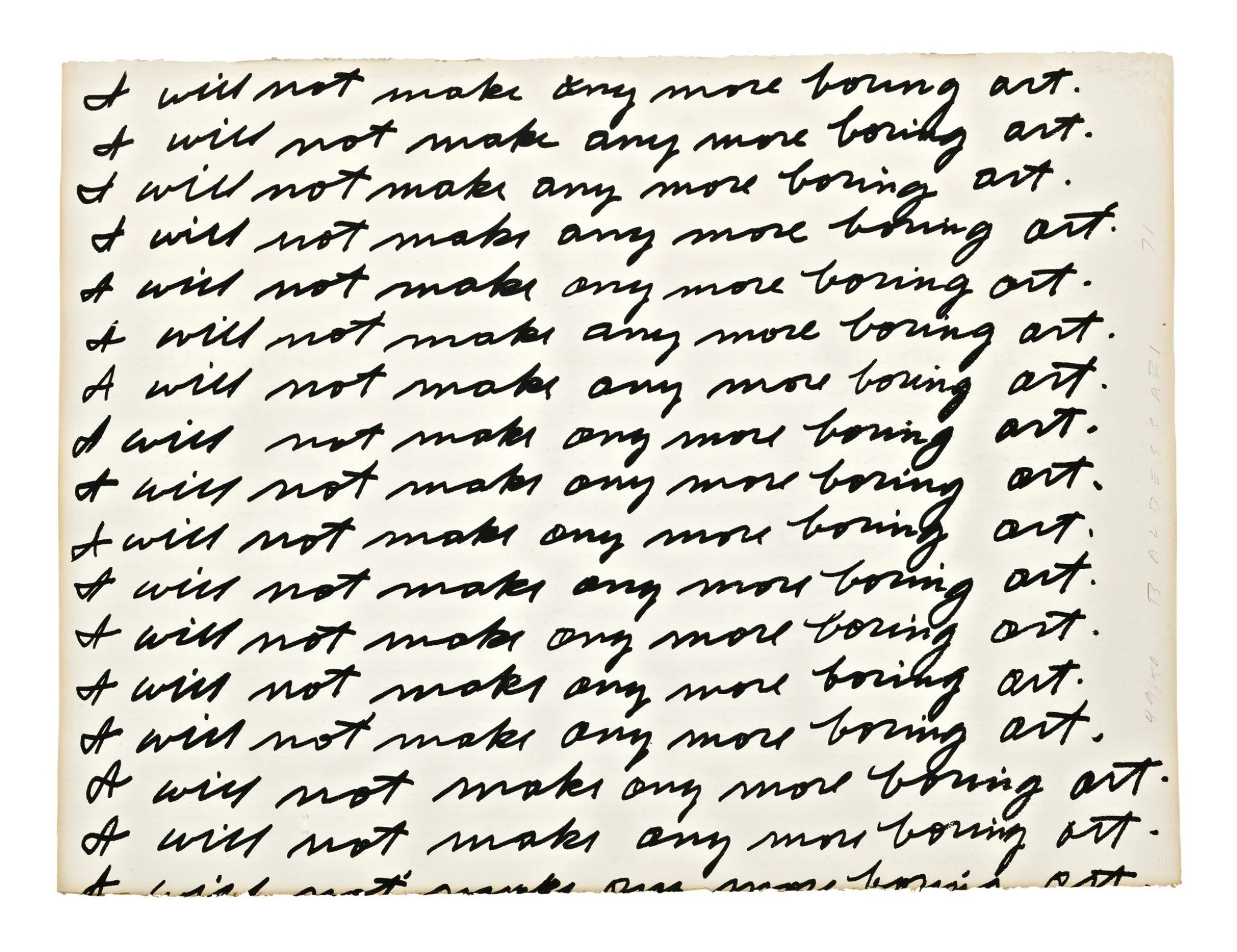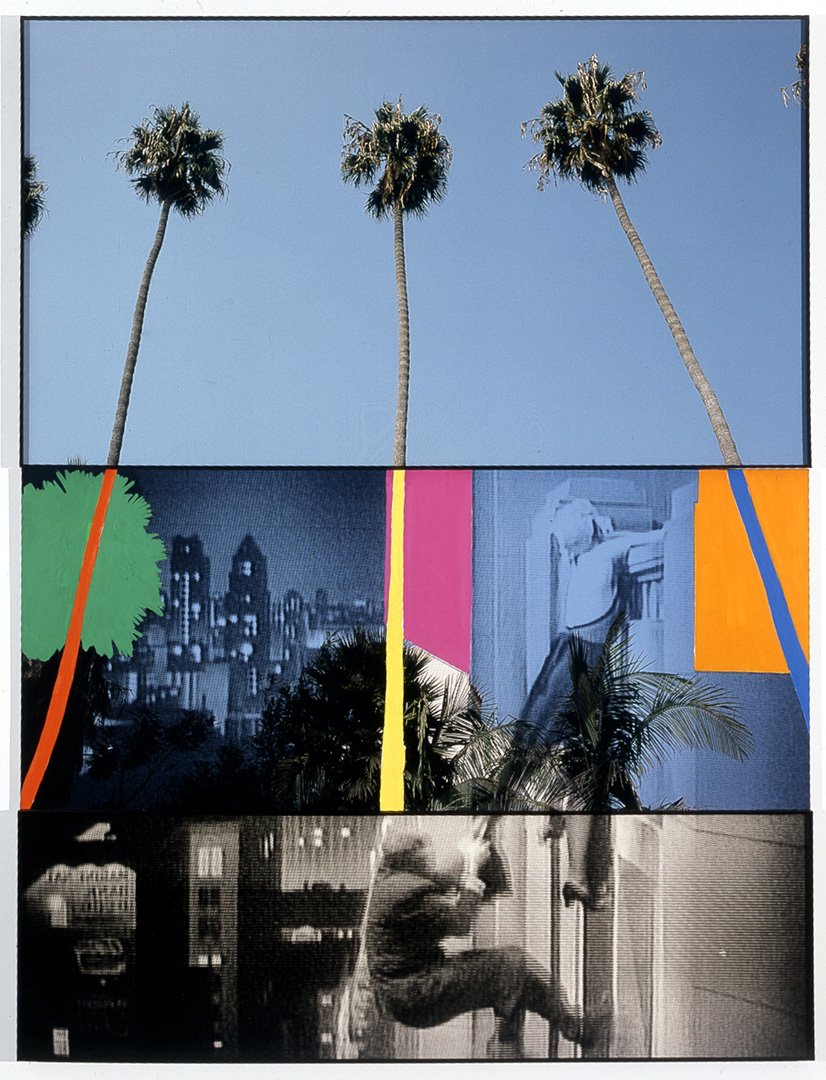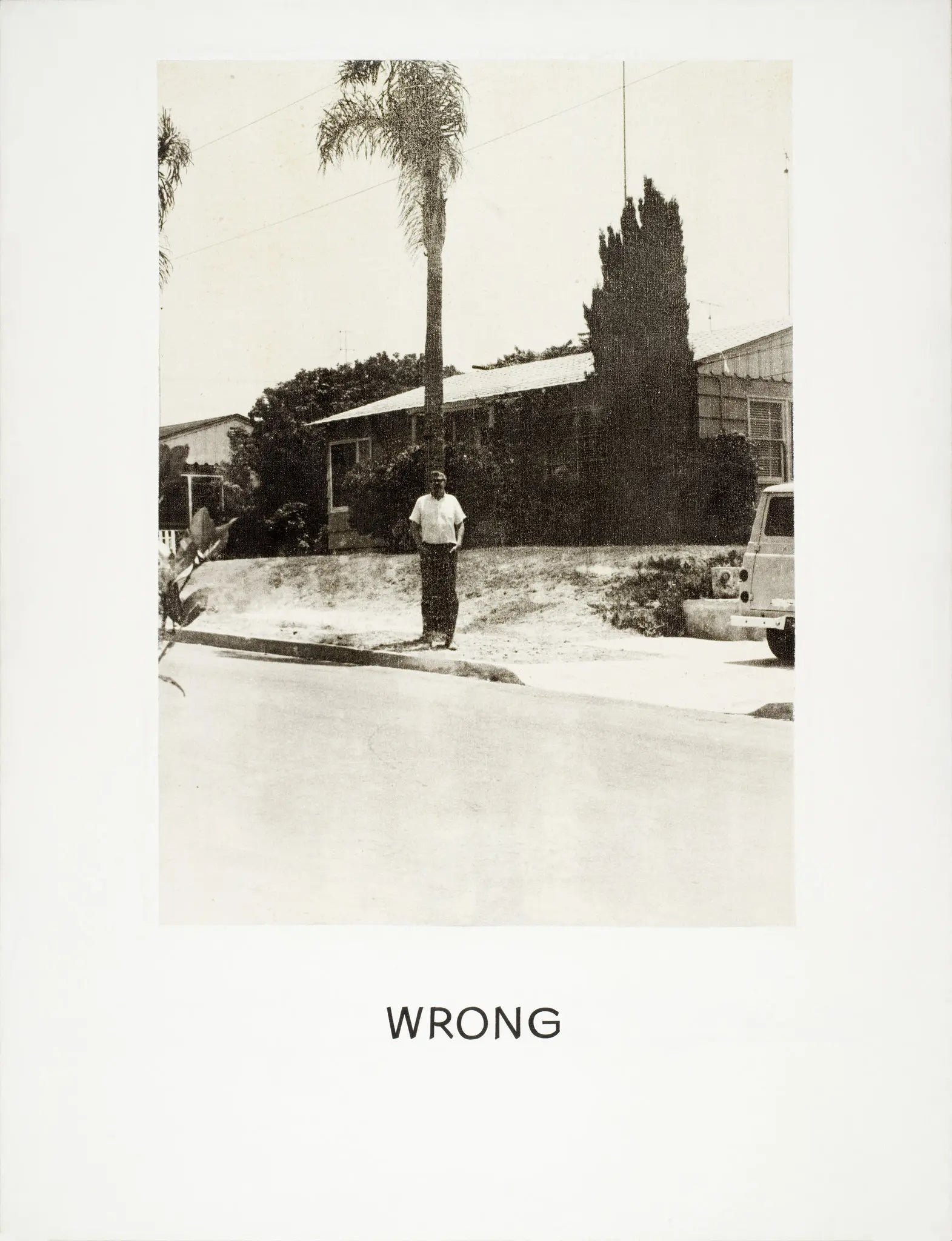Fine, Art: John Baldessari
I love art, but I don't know anything about art. I’ve never studied art or participated in art, but I know I love art. The word itself is small, but feels so big. I choose to be lenient in my definition of art. I see, hear and feel it all around me. I love art because it moves me and how fulfilling it is to be moved.
On days I feel I've wasted, I can find my way to an art-related video and feel better about myself, feel better about my day. I want to learn about art and I want to share what I’ve learned, casually and without ego. I’ll attempt to do that here in Fine, Art.
001 - John Baldessari
When visiting a new city, I typically have two initial thoughts: where do the skateboarders hang out and should I visit the museum? I understand my interest in where the skaters hang, but what is this weight attached to the feeling of being somewhere and needing to visit the museum? It started after I traveled with my smart friend, Dave, and his smart friend, Nicole.
I heard how they talked about cities: "Oh, you went to X? Did you visit Y?" X being a city and Y being a museum. X and Y? I said I wasn’t an art person, but anyway, I’ll continue.
I was 28 years old and six years into my first real job, crunching numbers for a Line Producer at a studio in Burbank, CA. I was given the task of training a new hire to do exactly my job. I saw what was happening and didn't fight it. My days were numbered and that was fine by me. I was tired of my job and I wanted a clear calendar so I could leave the country. I wanted to go on a trip.
A few months later, after visiting my cousin in Berlin, I was alone and in Hamburg, Germany. I got lucky. The skateboarders were outside of the museum. I paid my admission and even though the admission price is always a number I'd prefer not to pay, I never regret letting go of the money for art.
I strolled around as one does in a museum. I observed the other paying patrons stopping, looking at pieces, then reading the tiny, accompanying descriptions. “I’m not in the mood to read,” I felt. The descriptions always start with names and dates. I’m good with names, but not with dates. History was my worst subject in school. Too many dates.
At some point, to escape the main room and the crowd, I took a staircase down a level. Underground and in a dark room, I walked up to a performance piece, a video playing on the wall. “Wait, a movie? I can watch a movie” was my thought. The ‘movie’ was a performance piece by John Baldessari titled I Am Making Art - 1971. I remember stopping, watching and then audibly laughing alone in the basement. It was the first time I specifically remember being moved by art.
I introduce to you: John Baldessari
Albrecht Fuchs. John Baldessari Los Angeles. 2004
Born in 1931, John Baldessari was an artist from National City, San Diego, CA. He said nonexistent was the art scene where he grew up, but he went on to receive his Masters in Painting from San Diego State. Famous for cremating all of his canvases from 1953 to 1966 (I’ll do the math for you: He burned all of the paintings he made from age 22 to 35). He then took his art in a different direction, becoming a key figure in the emerging Conceptual art movement during the late 1960s and early 1970s. John’s definition of Conceptual art during this time: “Conceptual art meant you didn’t paint.”
John mentions taking a liking to creating art without paint because it was quicker and also helped him communicate. “What if you did give people what they understand? They read newspapers, some magazines and books. What if you gave them information in photographs? They look at photographs. They take photographs. Speaking in the language of the realm. My father, he lived to about 99, even then he spoke broken English. So in my effort to communicate with him and trying to make things clear that also implemented this idea of how to effectively communicate.”
The Pencil Story, 1972.
Both of John’s parents were immigrants, and wanting the best for him, they worried about how he would be able to survive as an artist. They offered architecture as an idea, but instead he chose teaching. In 1968, Baldessari became an original faculty member in the Visual Arts Department at University of California – San Diego. He later taught at CalArts until 1986 and finally at UCLA until 2008.
Baldessari worked in many hybrid forms. When looking through his body of work, you will see photographs, plain text on canvas or even a video of him writing “I Will Not Make Any More Boring Art” over and over again until the tape runs out.
I Will Not Make Any More Boring Art, 1971
John said, “Doing art is the only thing I’ve come across that gives me any idea that I’m anywhere close to understanding what the universe is about.”
Art, music, books, films, others I haven’t named. I feel they’re all connected, building on each other and challenging each other at the same time. This is why I love art and why I’m so broad with my definition.
One example of this connection, in this video narrated by Tom Waits, we learn that Baldessari considered director Jean-Luc Godard to be the most important artist of the 1960s, not Andy Warhol or Jasper Johns.
Thanks for reading this long introductory entry. The following entries will be less about me and more about the artists. — Phillip Dillon
Overlap Series: Palms (with Cityscape) and Climbers, 2000
Here are a few other quotes of John’s that made me think or smile:
“I’m just messy, I don’t put things away. I don’t throw things away in my mind, either; I keep them there.”
“My job is to treat the viewer as an intelligent person. If you serve it to ‘em on a silver platter, they haven’t really learned anything. But of course it’s gotta be a seductive thing. You’ve gotta engage them first. One word following another. Like a writer. It can be a flabby sentence because the words are flabby, they don’t really relate that well, but if you get just the right tension, bingo!”
“How do you take a good picture? How do you prove your photograph? It’s still out there: Don’t pose your subject in front of a tree because it will look like a tree is growing out of your person’s head. Well, that’s kind of cool. (Laughs) You can do that? So I just put the two together. Picture of me standing in front of a tree labeled, ‘Wrong.’ And it’s all about framing isn’t it? It’s why we’re lucky. Those decisions that we reject might be very fruitful. This game I played with myself. Who would care? I would very carefully compose a photograph. The camera and a photograph just perfectly. And then I’d just pick the camera up and move it and take the picture.”
Wrong, 1967.
Q: “Why is art an important part of society?” A: “It seems to be a nutritional need for the public. We build museums. And put what somebody decides is art, we put that in there for people to go there with their kids and they look at it and listen to an explanation on their iPhone and so-on. So that’s good. The bad thing is the connection with money now. Looking at it with the wrong eyes, values.”
and some videos:
If you have 14 minutes:
If you have 6 minutes:
If you have 2 minutes:
The main image at the top of this post is Man with Snake, 1990.








